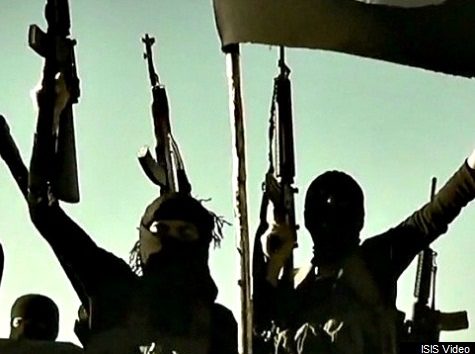U.S. prison was ‘terrorist university’ for Islamic State
This is because the U.S. does nothing in these prisons to try to change the mindset of the prisoners. The guards treat the Qur’an, which is of course distributed to all the prisoners, with exaggerated reverence. Any attempt to change their way of thinking would immediately be denounced by groups such as the terrorist organization CAIR as “Islamophobic.”
“U.S. prison was ‘terrorist university’ for Islamic State,” by Terrence McCoy, Waterloo Region Record, November 16, 2014:
WASHINGTON — In March 2009, in a windswept sliver of Iraq, a sense of uncertainty befell the southern town of Garma, home to one of the Iraq War’s most notorious prisons.
The sprawling detention centre called Camp Bucca, which had detained some of the Iraq War’s most radical jihadists, had just freed hundreds of inhabitants. Families rejoiced, anxiously awaiting their sons, brothers and fathers who had been lost to Bucca for years. But a local official fretted.
“These men weren’t planting flowers in a garden,” police chief Saad Abbas Mahmoud told The Washington Post’s Anthony Shadid, estimating 90 per cent of the freed prisoners would soon resume fighting. “They weren’t strolling down the street. This problem is both big and dangerous. And regrettably, the Iraqi government and the authorities don’t know how big the problem has become.”
Mahmoud’s assessment of Camp Bucca, which funnelled 100,000 detainees through its barracks and closed months later, would prove prescient. The camp now represents an opening chapter in the history of Islamic State — many of its leaders, including Abu Bakr al-Baghdadi, were incarcerated and likely met there.
According to former prison commanders, analysts and soldiers, Camp Bucca provided a unique setting for both prisoner radicalization and inmate collaboration — and it was formative in the development today’s most potent jihadist force.
In all, nine members of the Islamic State’s top command did time at Bucca, according to the terrorist analyst organization Soufan Group. Baghdadi spent five years there; the leader’s No. 2, Abu Muslim al-Turkmani, as well as senior military leader Haji Bakr, now deceased, and the leader of foreign fighters, Abu Qasim, were also incarcerated at Bucca, Soufan said. Though it’s likely the men were extremists when they entered the detention centre, the group added, it’s certain they were when they left.
“Before their detention, Mr. al-Baghdadi and others were violent radicals, intent on attacking America,” wrote military veteran Andrew Thompson and academic Jeremi Suri in the New York Times last month. “Their time in prison deepened their extremism and gave them opportunities to broaden their following … The prisons became virtual terrorist universities: The hardened radicals were the professors, the other detainees were the students, and the prison authorities played the role of absent custodian.”
It’s a scenario that’s long confounded law enforcement: How do you crack down on extremism without creating more of it? From the radicalization of white supremacists in U.S. prisons to the United Kingdom’s disastrous bid in the 1970s to incarcerate Irish Republican Army members, the problem is nothing new: prisons are pools of explosive extremism awaiting a spark….
RELATED ARTICLES:
PJ Media: 6 Failed Policies Obama Won’t Stop Pushing
Iran TV airs Muslim cleric’s threats to raze Tel Aviv, target US bases
Mehdi Hasan goes full fascist, calls for sanctions for criticism of Muslims


